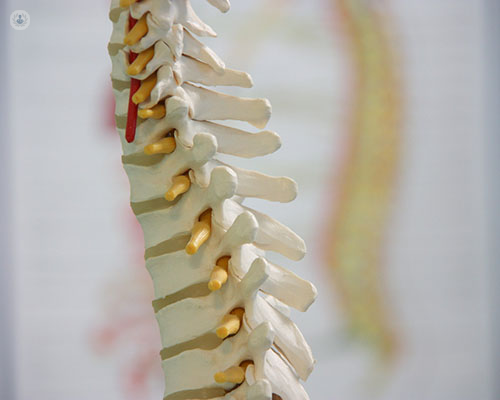How can spinal disc problems be solved with surgery?
Written by:Many people that have a herniated disc don't have symptoms, and require no treatment. However, for those who experience related nerve pain, surgery may be required.

What is a cervical herniated disc?
Cervical disc herniation is a displacement of the intervertebral disc in the cervical segment of the spine that causes a compression of the nerve structures around it, either from the spinal cord, in which case it will cause a loss of strength and skill especially In the hands, or in the nerve roots, in which case it will cause intense pain in one or both arms. Additionally, because the mechanical structure includes the disc, clamping and management of the cervical spine, pain can be caused in the neck.
What are the treatments for cervical disc herniation?
Cervical spine surgery in relation to the herniated disc is a minimally invasive surgery, carried out in either of two techniques: anterior and posterior. The posterior method is used mainly for root compression, either from soft disk herniation or the more common osteophytes. The anterior method enables arthrodesis to be performed on the herniated disc - that is, immobilisation of the intervertebral bodies once the disc or arthroplasties have been removed; i.e. change the removed disc for a movable disc that simulates natural movement.
What are the risks of herniated disc surgery?
Any surgery, obviously, has risks and the surgeon will explain these on an individual patient basis. Cervical intervertebral disc surgery is a minimally invasive surgery - therefore the risks are few but patients should be aware. With the anterior approach the fundamental risks are injury to the structures by which the surgeon has to pass to arrive at the disc to be repaired. These include:
- the airway;
- the digestive tract, and;
- parts of the nervous system, especially in relation to recurrent nerves that can cause aphonia.
There is also risk of a spinal cord injury but this is very rare. There are only minor risks associated with the posterior approach.
How much recovery time is needed after a herniated disc?
In general, recovery following cervical disc herniation surgery is relatively easy for the patient, as it is minimally invasive surgery. In the case of the anterior approach, no muscle is touched, and no other body parts are affected, and the patient usually has recovery period of 24 or 48 hours and can start normal work activity after three or four weeks as long as strenuous physical activity is avoided.
For the posterior technique, recovery takes a little longer but usually in two or three days the patient is well enough to be more or less normally active, and in three or four weeks resume their regular lifestyle.
If you require medical attention for a herniated disc, arrange an appointment with one of our leading lumbar herniated disc specialists.


